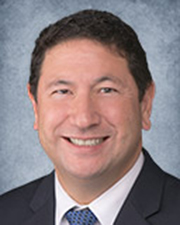Special Report from Marcus & Millichap: Federal Reserve - by Steve Hovland and John Chang

Federal Reserve Delivers Aggressive Monetary Policy Early in Coronavirus Outbreak
Federal Reserve pulls all the levers to bridge U.S. economy through a global pandemic. The Federal Open Market Committee (FOMC) unleashed its broad and sizable arsenal this week, highlighting the impact COVID-19 will have on the national economy and the central bank’s willingness to be accommodative early in the cycle to dampen an economic downturn. Nonetheless, an increase in unemployment claims and job cuts is unavoidable as a significant wave of retail, hospitality, travel and other parts of the consumer-based economy are shuttered. Congress is also undertaking dramatic efforts to minimize the consequences of job losses. Uncertainty surrounding the impact of these actions remains high, though little doubt remains on the willingness of the central bank to move far more quickly to prop up markets and the economy than during the early days of the Great Recession.
In a decisive move, the Federal Reserve dropped the federal funds rate to between 0 and 0.25 percent ahead of a regularly scheduled meeting. Decreasing the overnight rate to the “zero-bound,” where it rested for several years during the Great Recession, maximizes the use of one of the central bank’s tools to manage the global economic slowdown. The move is designed to maintain liquidity so financial markets do not freeze like they did in the last recession. The Fed leveraged another option in its toolbox as quantitative easing joined the rate cut to provide temporary support to the economy. The first action undertaken by the Fed was an injection of more than $1 trillion of liquidity into the market by purchasing short-term Treasurys. When the Fed cut rates on March 15, it also included a $700 billion bond-buying round of quantitative easing. A total of $500 billion in Treasurys and $200 billion in mortgage-backed securities will be added to the bank’s balance sheet. Prior to the announcement, the Fed’s balance sheet was $4.3 trillion, down $200 billion from the $4.5 trillion level maintained through most of the recovery. The FOMC announced unlimited quantitative easing. In an effort to calm markets and soften the blow the U.S. economy faces during the second quarter of this year, the Fed will employ open-ended bond buying. The central bank’s statement emphasized that “aggressive efforts must be taken across the public and private sectors to limit the losses to jobs and incomes and to promote a swift recovery once the disruptions abate.”
Federal Reserve Opens Range of Facilities to Backstop Market Liquidity
Fed to buy CMBS, supporting real estate liquidity. Fed action also includes the creation of three new facilities, reactivating three others, and significantly expanding the type of qualifying bonds the Fed can add to its balance sheet. New bond acquisitions will consist of agency commercial mortgage-backed securities, corporate bonds, and asset-backed securities that range from student, auto, credit-card and small-business loans. In addition to purchasing securities backed by SBA loans, a “Main Street Business Lending Program” was also announced, though details will be released at a later date.
- Primary Dealer Credit Facility (PDCF): Revived to offer short-term loans to 24 large financial institutions.
- Money Market Mutual Fund Liquidity Facility (MMLF): Relaunched to lend to banks on collateral they purchase from prime money markets.
- Primary Market Corporate Credit Facility (PMCCF): New facility to acquire new corporate bonds and provide loans to large businesses. Initial funds announced at $100 billion.
- Secondary Market Corporate Credit Facility (SMCCF): New facility to acquire existing corporate bonds and provide loans to businesses. Initial funds announced at $100 billion.
- Term Asset-Backed Securities Loan Facility (TALF): Revived facility that lends to holders of student, auto, credit-card and SBA loans.
- In terms of real estate, interest rates at the zero bound is not a new phenomenon. The overnight rate spent seven years at nearly zero before being lifted in December 2015. Low rates helped fuel the strongest investment real estate market on record, which is particularly impressive given the depth of the last recession and real estate’s involvement.
Although Treasurys are near an all-time low, significant cap rate compression is not anticipated considering increased uncertainty. However, a rise in spreads between interest rates and cap rates could emerge as an opportunity, though the spread will increase much less than interest rates fall as banks partake in some risk management.
John Chang is senior vice president, national director | research services division at Marcus & Millichap. This report was prepared and edited by Steve Hovland is the senior editor, senior analyst | research services at Marcus & Millichap
AmTrustRE completes $211m acquisition of 260 Madison Ave.


Behind the post: Why reels, stories, and shorts work for CRE (and how to use them) - by Kimberly Zar Bloorian

AI comes to public relations, but be cautious, experts say - by Harry Zlokower

Lasting effects of eminent domain on commercial development - by Sebastian Jablonski









.jpg)

.gif)